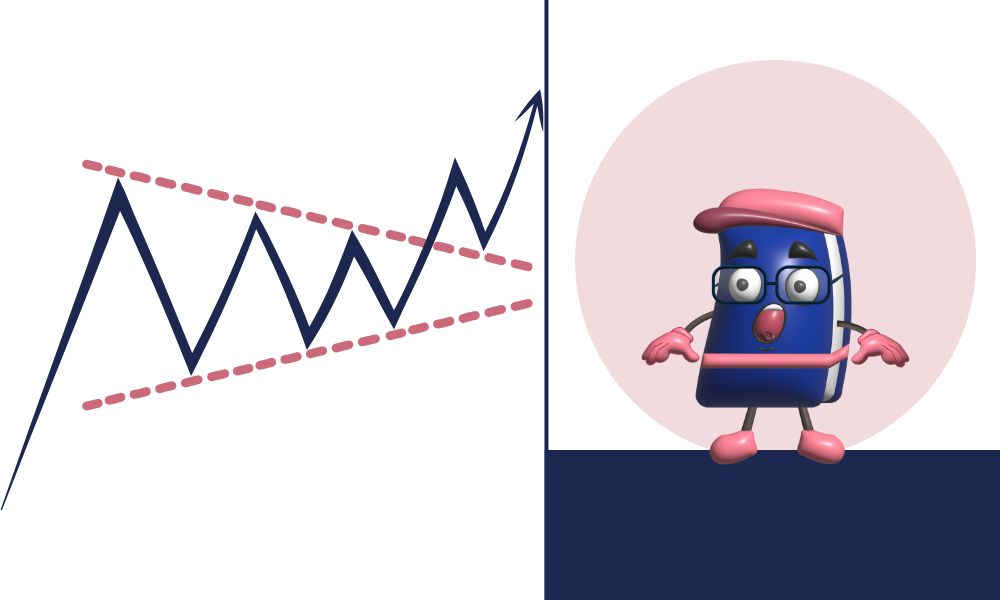
A rising wedge is a bearish chart pattern that consists of two trend lines that meet in the center. The trend lines rise up to meet each other.
The first trend line connects the recent lower highs and higher highs, and the second trend line connects the recent lows. The shape that is made looks like an up-angled triangle. The pattern of a rising wedge is a falling wedge.
The rising wedge pattern could be seen as a bearish wedge, since the low is higher than the high and the lower trend line is steeper than the upper one.
Even though the falling wedges have a similar shape, the only things that make them different are the angle of the triangle and what the pattern suggests.
The rising wedge (ascending) pattern, in which trade volume declines as the wedge develops, forecasts future dropping prices or a breakout to a downtrend, making it a bearish pattern.
Despite the wedge capturing the price movement continuing higher, the declines in trade volume could indicate that sellers are consolidating their position in preparation for a bearish breakout.
The falling wedge (descending) pattern, on the other hand, has a negative slope, slanting downward and predicting a nearby rebound, making it a bullish pattern.
The fascinating thing is that a rising wedge can appear during a downturn as a continuation pattern or during an uptrend as a reversal pattern.
When two trend lines intersect, the rising wedge pattern becomes the shape of a slice of pizza. The rising wedge pattern creates a series of higher highs and lower lows.
The resistance trend line must cover the pattern's extreme high points. The resistance line requires a minimum of two higher highs.
Similarly, construct a support trend line that encompasses the higher lows. To create the support trend line, you'll need at least two swing lows.
After drawing the resistance and support trend lines, you should observe a triangular form that resembles a wedge. The apex of the triangle in the rising wedge pattern must be directed upward.
As a result, the resistance trend line must slope upward to qualify this as a rising wedge pattern.
Even though it might be challenging to see in real time, the rising wedge pattern is a favorite among traders and technical experts.
It is common practice to confuse the rising wedge pattern, which is a reversal formation, with the triangle pattern, which is a continuation formation.
The obvious entry and exit indications that are provided by the ascending wedge pattern make the rising wedge a perfect choice for traders who wish to short the market or use the signals to manage their long-term HODL positions.